Cost Management
This section gives you an overview how to manage run and change costs of applications in SAP LeanIX
SAP LeanIX provides several ways to manage costs related to applications and IT Components. However, it is not a cost management tool. The objective is not to achieve total accuracy in costs within SAP LeanIX; rather, the goal is to establish a level that is easy to maintain while meaningful at the same time. To learn more about typical reports, see IT Financial Management in SAP LeanIX. Additionally, leverage integration with Apptio, to improve the accuracy and effectiveness of cost management. Through this integration, SAP LeanIX collects accurate IT finance data, at the same time simplifying the overall data collection process. To learn more about Apptio integration, see Apptio Integration.
SAP LeanIX allows managing costs in two ways:
- Run costs are managed at the relation between IT Component and Application
- Change costs are managed as attributes of projects.
For both types, SAP LeanIX supports two types of analyses:
a) Link cost to producer
Every IT Component or Project can bear cost elements. Find out directly at the producer Fact Sheet how much.
b) Analyze cost per consumer
Use reports and exports to answer e.g., the following questions:
- How much do we pay a provider?
- How much does a technology cost?
- How much build cost do we spend for applications?
Good to know
In the following, the standard mechanisms to manage costs in SAP LeanIX are shown. As costs is a complex and sensitive topic, it makes sense to consider further Configuration opportunities, like adapting the permission model or creating further aggregated fields. You may reach out to support at SAP LeanIX Support or reach out to your CSM for more details. If you're an SAP customer, submit a request from the SAP for Me portal.
Managing run costs
Run costs are typically managed at the relation between the Application and IT Component. They typically comprise costs for services (data center operations, application development, demand management, ...), software (licenses, rent, support, ...) or even hardware (server, workspaces, ...).
Best Practice
Considering employees managing the IT portfolio as an internal service often enables a more comprehensive plan, build, run view.
Best Practice
Remember that there is a trade-off between accuracy and effort to maintain the data. Often it is sufficient to aggregate cost per application, e.g. to only maintain costs for a single service, to create meaningful insights.
You start to maintain run costs at the Application Fact Sheet.

- Enter Total annual cost as an attribute of the Application - IT Component relation.
- View costs for software, hardware and services directly at the Application Fact Sheet.
At the IT Component Fact Sheet, you can take the opposite view and manage how costs for a particular software, hardware or service are distributed.
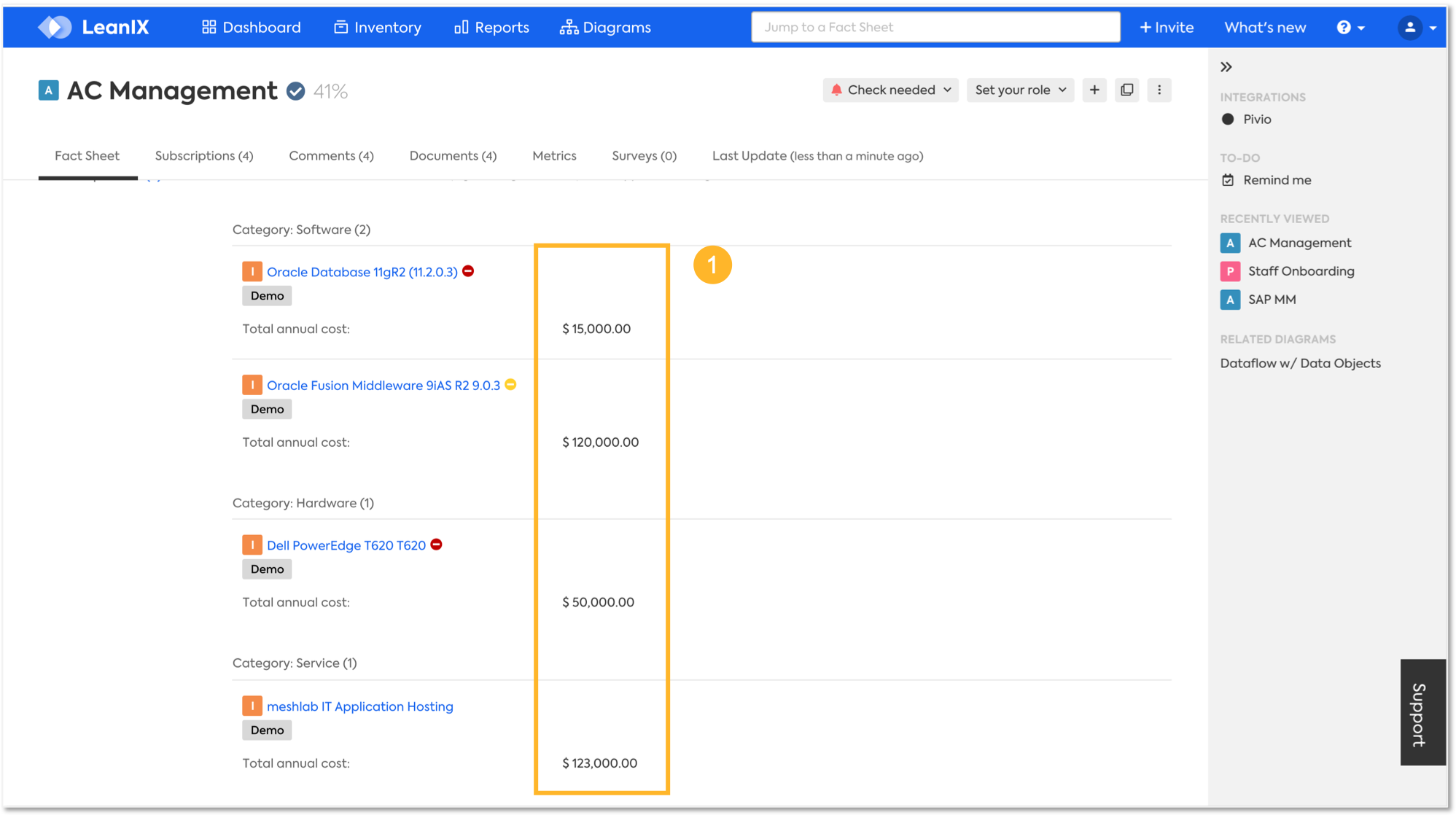
- See the Total annual cost as an attribute of the IT Component - Application relation
The Application Landscape report allows creating a heat map of the cost distribution in relation to Business Capabilities, Processes or Organization.

- Set the view to "IT Component: Total Annual Cost.
- The report shows the range of costs color-coded, and allows a quick analysis of the hot spots.
The Business Capability Cost report allows to sum up the run costs by Business Capability.
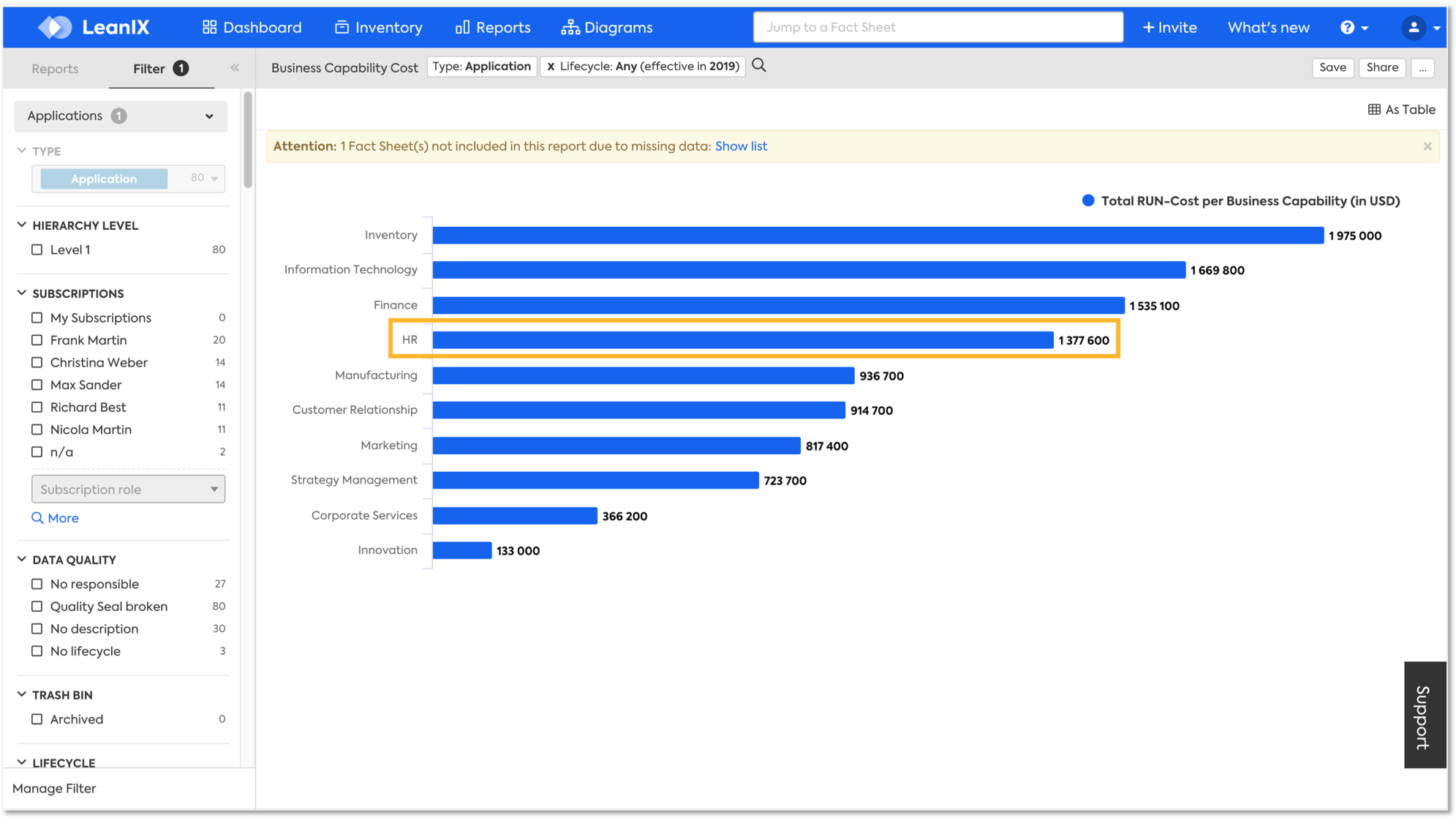
Attention
In order for the Business Capability Cost report to work, you need to set the attribute "Support Type" on the Application - Business Capability relation to "Leading". This way, SAP LeanIX makes sure that run costs are only counted for one Business Capability.
In the rare case where an Application is set to "Leading" for multiple Business Capabilities, run costs will be split equally between these Business Capabilities.
The Provider Cost report allows to sum up the run costs by Provider.
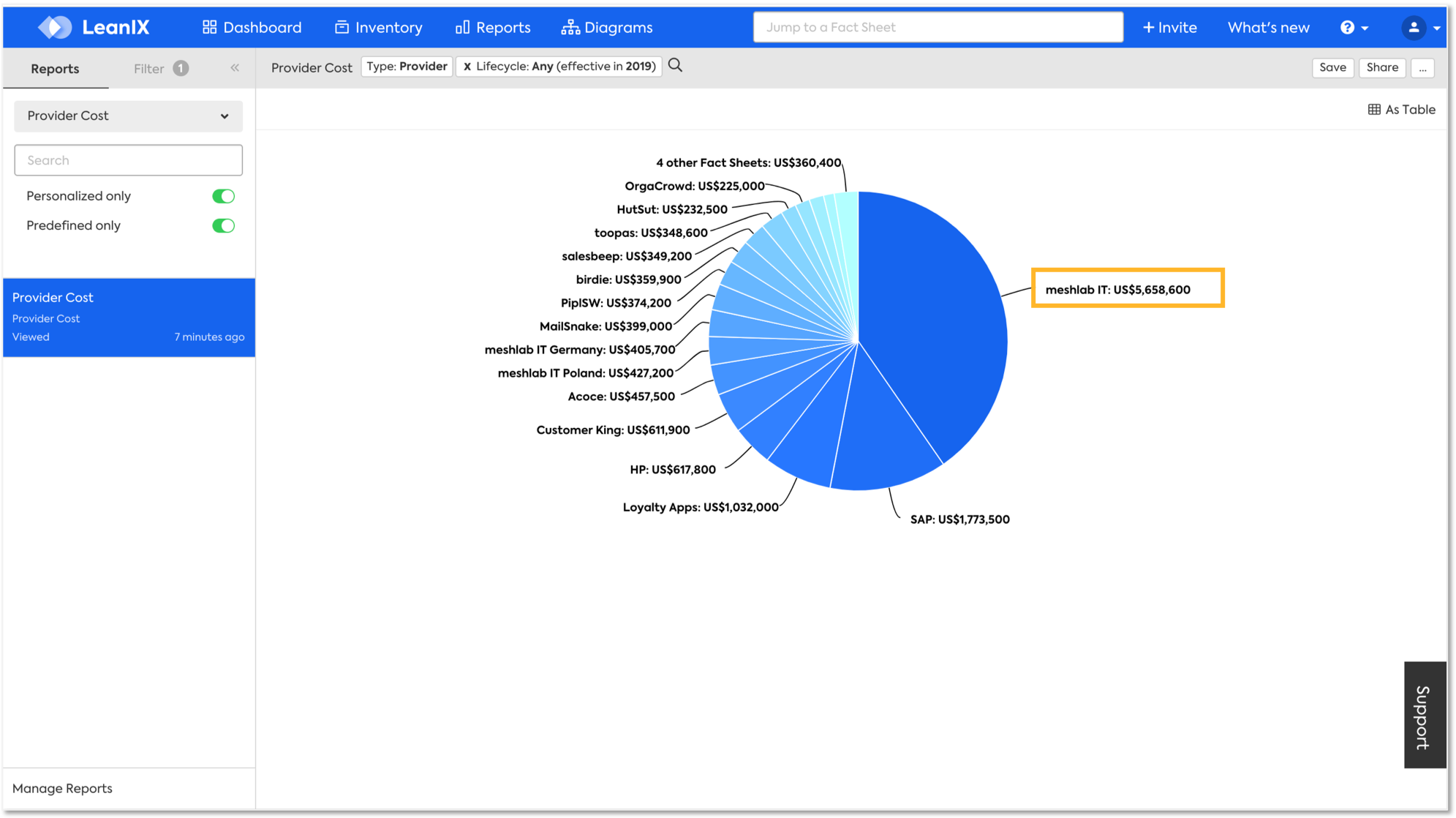
Best Practice
Run costs are often imported from a cost management system like Apptio or SAP FI. This GraphQL Example: Application Costs page gives a nice example of how to import costs via the SAP LeanIX GraphQL API.
Managing change costs
Change costs are managed via the Project Fact Sheet. You can include both Budget, Operating Expenses (OpEx) and Capital Expenditure (CapEx), and Ordered Values. The latter is captured as properties of the relation Project - Provider in order to relate the Order to a concrete delivery.
Best Practice
Include your internal IT organization as a provider to manage the internally ordered costs.
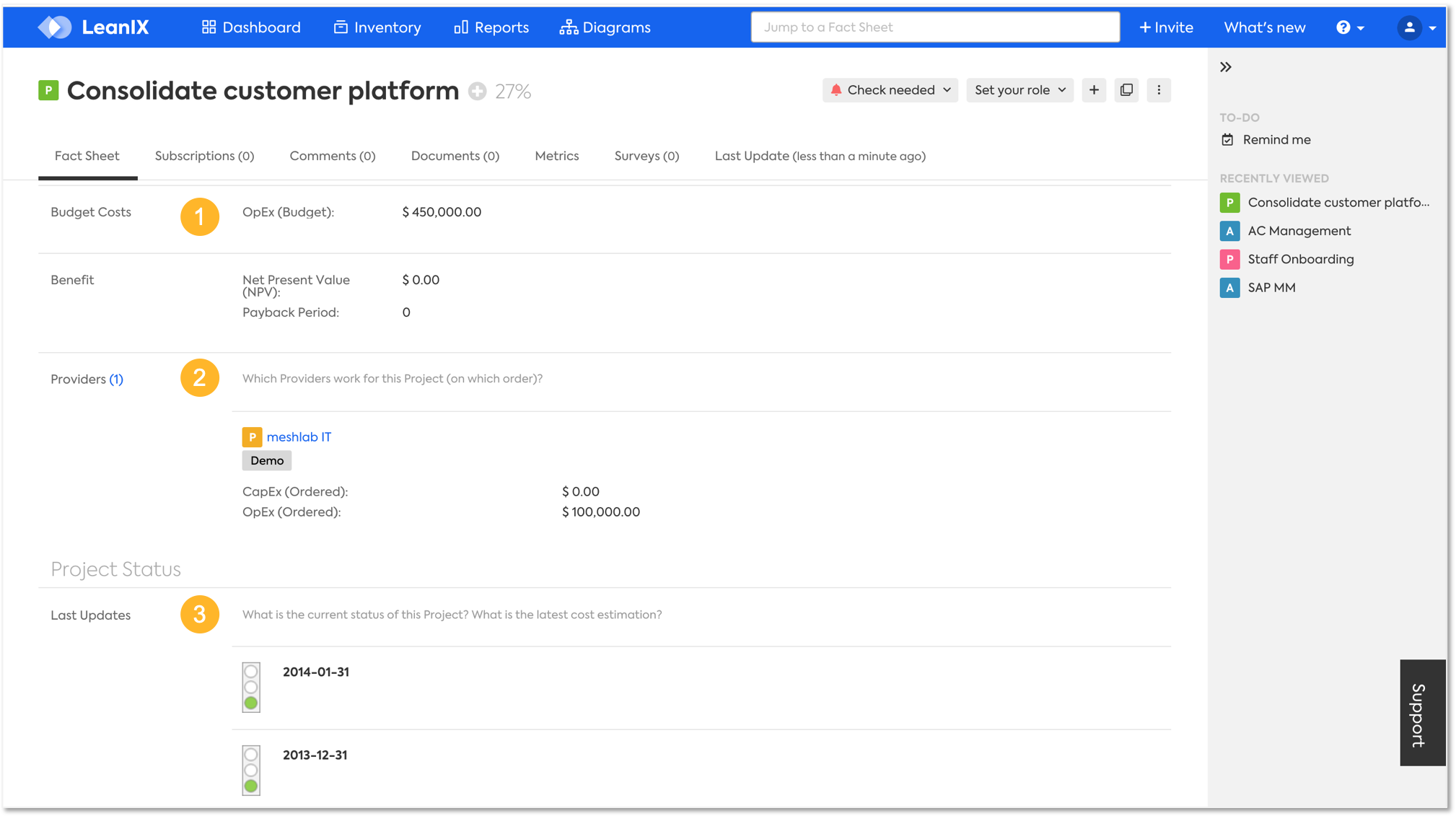
- Managed Budget OpEx and CapEx as attributes of the Project Fact Sheet.
- Managed Ordered OpEx and CapEx as attributes of the Provider relation.
- Manage the status of the project to relate progress to Ordered Budget in the Project Cost Report.
The Project Cost report allows you to have all project costs and status for a certain filter (e.g. project category, affected applications) at a single glance
Information
You can activate the Project Cost Report from the SAP LeanIX Store. Please refer to our Store documentation page for more information.
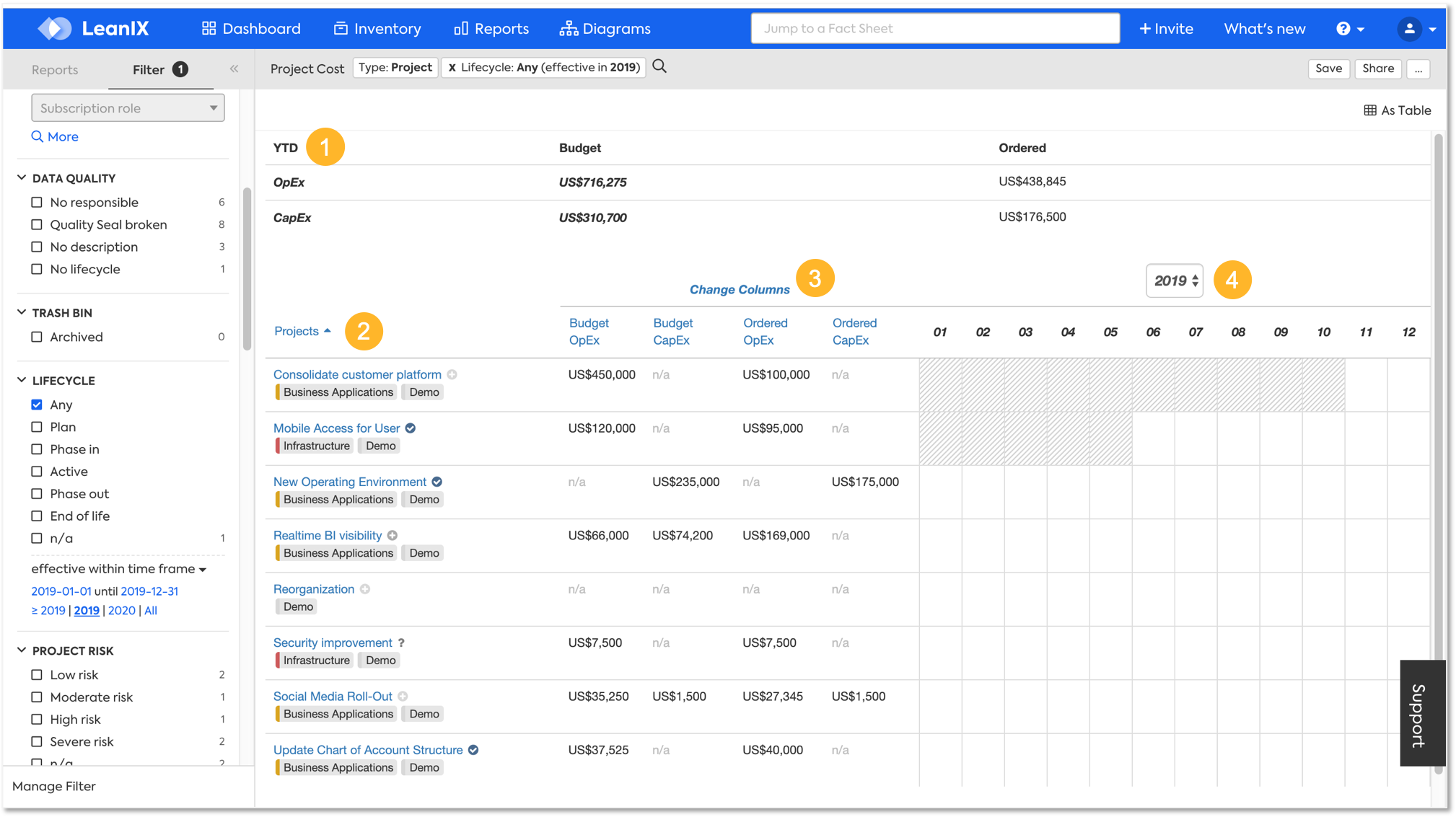
- Get an overview of Budget and Orders for the filtered Projects.
- Get a list of all filtered Projects.
- Choose the columns you would like to see. You can also add further attributes like NPV or project progress.
- Relate the numbers to the state of the project for your selected year.
Updated 23 days ago
